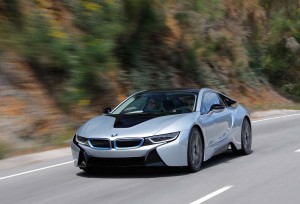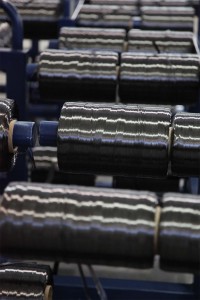BMW and its partner SGL Automotive plan to triple their production of carbon fiber, a lightweight, but traditional expensive, material that many believe could be crucial to meeting future emissions and mileage mandates – and to making battery-electric vehicles, such as the BMW i3 and i8, more acceptable to consumers.
A number of automakers, including Toyota and General Motors, have been looking for ways to both lower the cost of, while also expanding production of, carbon fiber.
But BMW has one of the most ambitious programs underway with SGL’s assistance, the partners operating plants in both Moses Lake, Washington and in Germany. The U.S. plant will now benefit from an additional investment of $200 million and is expected to become the world’s larger producer of carbon fiber reinforced plastics, or CFRP.
“With its highly automated carbon fiber production and stringent quality standards, Moses Lake is setting new standards in the industry. At present, the site is the world’s fastest growing carbon fiber producer. Together with the BMW Group, we are doing pioneering work to establish CFRP as a material in large-series automotive production,” explained Dr. Jürgen Köhler, CEO of SGL Group.
Until recently, carbon fiber composites were used in only the most limited automotive applications due to their extreme costs – typically on race cars where reducing mass could deliver the added margin of victory, and on the most exotic supercars, such as the McLaren P1. But CFRP has begun to move somewhat down-market, if not yet into the mainstream.
Chevrolet uses the material in such things as the removable T-Top roof for the new Corvette Stingray, for example. And BMW has turned to carbon fiber for much of the body on its new i3 battery-electric vehicles, as well as for the upcoming i8 plug-in hybrid sports car.
(Click Here to read the review of the new BMW i8.)
Reducing mass is critical for all vehicles as Europe enacts tougher CO2 standards and the U.S. auto industry stares down the 54.5 mpg mandate going into effect in 2025. A general rule of thumb is that by cutting 100 pounds of weight off a vehicle fuel economy increases by roughly 1 mpg.
But reducing mass is even more critical when it comes to battery-based vehicles struggling to improve their range. BMW is betting that this more than justifies the added cost of using carbon fiber on a relatively mid-market offering like the i3 city car, while it can more readily absorb the added cost for the $136,000 i8.
(BMW aims to produce 100,000 battery cars by 2020. Click Here for the story.)
At the moment, the Moses Lake plant’s two production lines are dedicated exclusively to supplying the BMW i program, with an annual output of 3,000 tons of carbon fiber. Two more lines have already been in the works, a move that was expected to double production volumes. But the latest investment will bring the plant’s capacity to 9,000 – something the partners describe as their “mid-term” target, suggesting they have yet bigger plans in the works. Even then, Moses Lake would become the world’s largest carbon fiber factory.
Skeptics have been questioning just how “green” some of the automotive industry’s alternative propulsion and manufacturing technologies really are. Aluminum, which is coming into widespread use as another light alternative to traditional steel bodies and platforms, is extremely energy intensive in the manufacturing process, for example.
But BMW and SGL note that the Moses Lake plant will draw all of its energy from hydropower.
BMW has already hinted that it may boost production of the new i3 and i8 models, but it appears to have other opportunities in mind, hints Klaus Draeger, the board member in charge of purchasing. With the planned expansion in Moses Lake, he says, “We will be able to produce the ultra-lightweight high-tech material also for other model series, at competitive costs and in large quantities.”
(BMW’s new concept coupe could become its next 8- or 9-Series flagship. Click Here for a closer look.)


